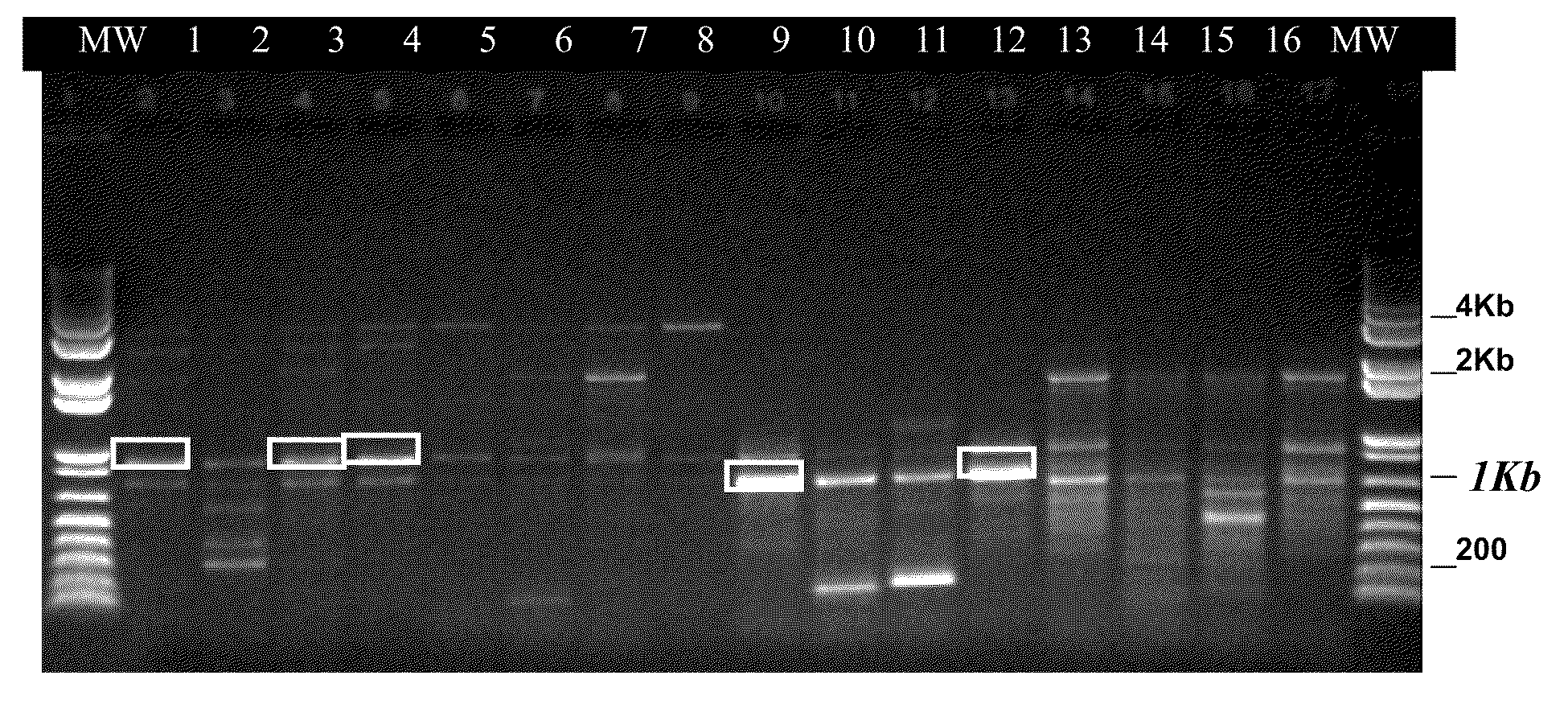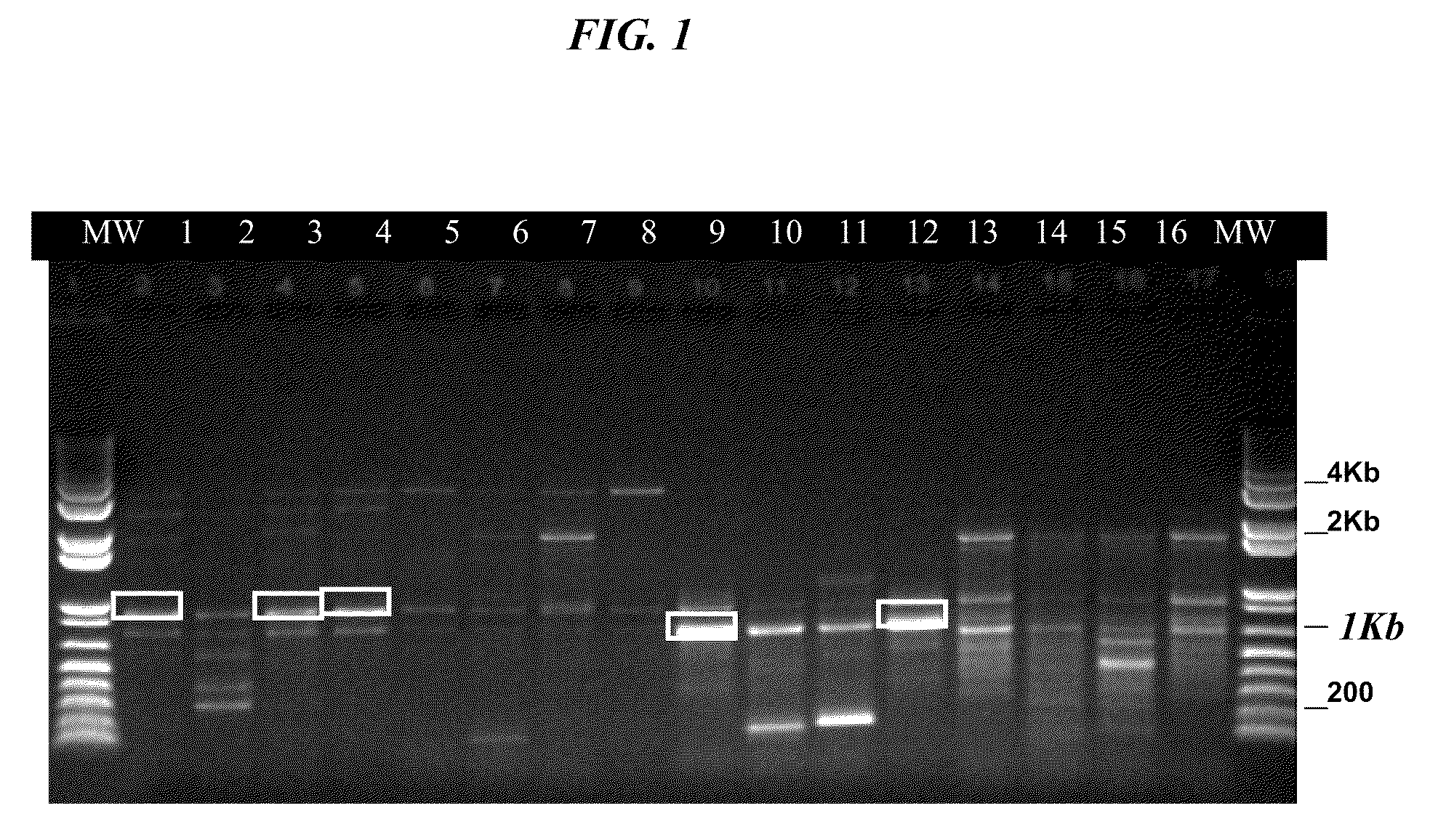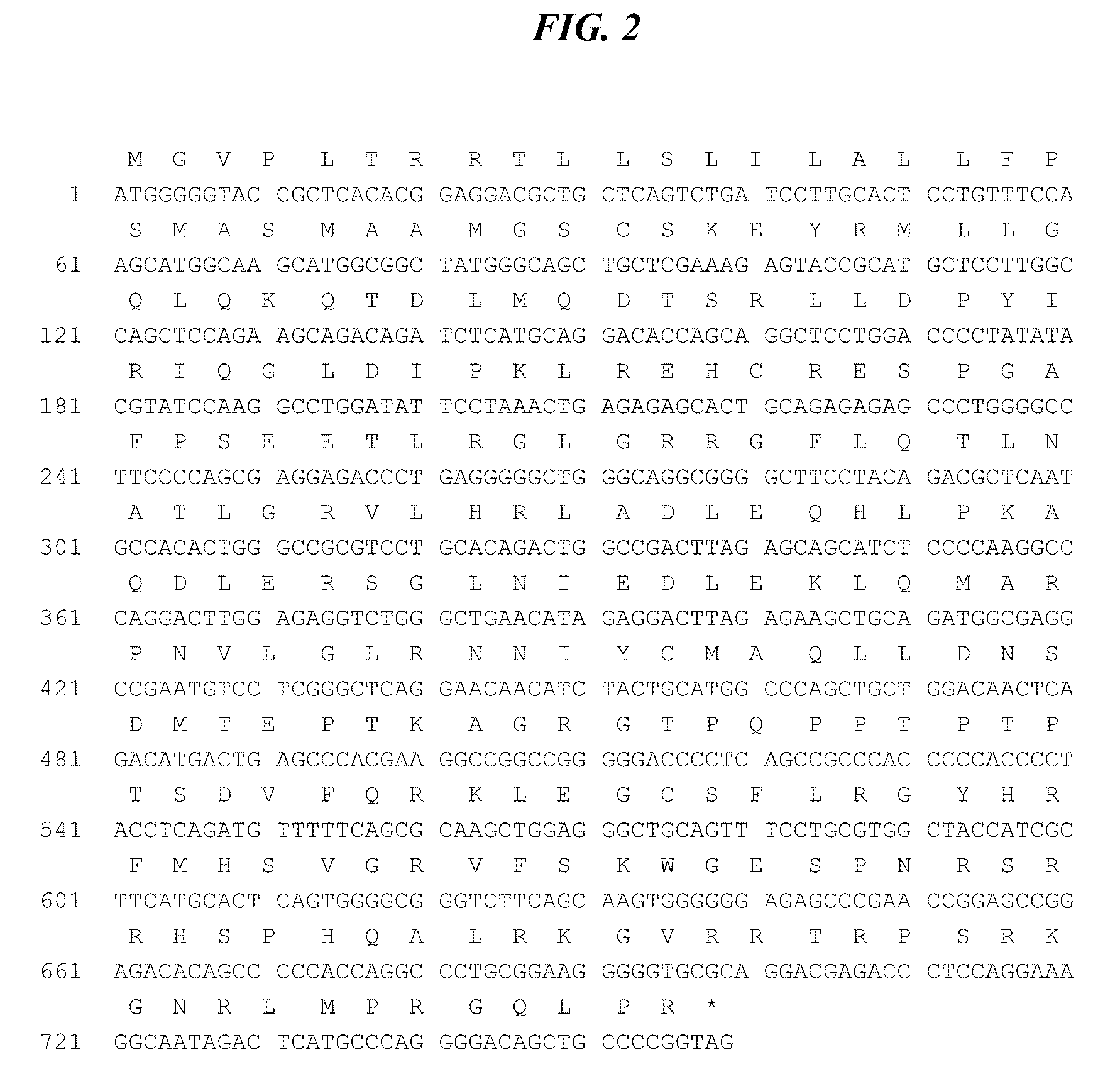Monkey homolog of human oncostatin m
a technology of oncostatin and monkeys, applied in the field of monkey homologous human oncostatin m, can solve the problem that the murine protein does not represent a functional surrogate for the study of some human osm pathway pathways
- Summary
- Abstract
- Description
- Claims
- Application Information
AI Technical Summary
Benefits of technology
Problems solved by technology
Method used
Image
Examples
example 1
Cloning of CYNO OSM
[0060]Untranslated region (UTR) primers for the 5′ and 3′ ends were designed using the human OSM sequence (NCBI accession #NM—020530, SEQ ID NO: 6) as shown in Table 1. Cyno PBMC's were obtained from blood sample from Cynomolgus monkeys and RNA was made using Qiagen Rneasy mini-kit (#74104) and the Qiagen Qiashredder kit (#79654). Next, cDNA was generated from the PBMC RNA using Superscript III first strand synthesis system (InVitrogen, #18080-051). The cDNA was then PCR amplified using the UTR primers designed from the human OSM sequence.
TABLE 1SEQ IDDescriptionOligo sequenceNO:5′ UTR huOSM#15′-agccgagaggtgtcaccc-3′33′ UTR huOSM#15′-cctctcatccacagagc-3′4M13 Forward (−20)5′-gtaaaacgacggccagt-3′5
[0061]PCR product was separated by 1% agarose TBE agarose gel electrophoresis and visualized under UV light. A fragment of approximately 1 kB was expected; the band indicated by the white box in lane #2 of FIG. 1 yielded the cyno OSM gene using SEQ ID NO: 3 and 4. The band ...
example 2
Expression and Activity of CYNO OSM
[0064]HEK 293-F cells were seeded at 5.0×105 cells per ml in a Wave Cellbag 20L (GE # CB0020L) the day prior to transfection in 10 L of 293 FreeStyle media (Invitrogen #12338). The settings for the Wave bioreactor were 18 rocks per minute at a 7 degree angle with 0.3 L / min of air set at 8.0% CO2 and 37° C. On the day of transfection, the cells were at 1.0×106 cells per ml. An aliquot of a mixture containing 6.25 mg of OSMA2 DNA encoding Cyno Oncostatin M-His-Avi with 6.25 mg of pAdvantage (Promega #E1711) was diluted in 100 ml of Opti-Pro media (Invitrogen #12309). Max Transfection Reagent, 12.5 ml, was diluted in 100 ml of Opti-Pro media and the DNA and lipid were combined and allowed to incubate for 10 minutes at room temperature. Then, 200 ml of the DNA lipid complex was added to the cells and the rocking speed was increased to 28 RPM while the other conditions were held constant. Incubation continued for 96 hours.
[0065]Cyno OSM was purified fro...
example 3
STAT3 Phosphorylation Activity of CYNO OSM
[0067]The purified protein was tested in a STAT3 phosphorylation assay using immortalized cyno lung fibroblasts and A375 cells.
[0068]Cells are maintained in DMEM (Gibco Cat #11995)+10% FBS (Gibco Cat #16140)+1% Pen / Strep (Gibco Cat #15140). Cells are cultured in DMEM+10% FBS. This is also the assay media. In black TC-treated plates, 25,000 cells / well are plated in the first 9 columns of a 96 well plate in their normal growth media. The outer wells are filled with 200 μL of PBS to prevent evaporation. The cells are incubated overnight at 37° C.
[0069]The following day, for cytokine growth curves the media is completely removed and 180 μL of fresh media is added (done per plate so that wells do not dry out). A dilution plate is made in media with 10× concentrations of agonists (such as OSM) and 1:4 dilutions from 1000 to 0.02 ng / mL. Then, 20 μL is added to triplicate wells of the assay plate.
[0070]After 10 minute incubation, the supernatant is ...
PUM
| Property | Measurement | Unit |
|---|---|---|
| cross-reactivity | aaaaa | aaaaa |
| structure | aaaaa | aaaaa |
| covalent chemistry | aaaaa | aaaaa |
Abstract
Description
Claims
Application Information
 Login to View More
Login to View More - R&D
- Intellectual Property
- Life Sciences
- Materials
- Tech Scout
- Unparalleled Data Quality
- Higher Quality Content
- 60% Fewer Hallucinations
Browse by: Latest US Patents, China's latest patents, Technical Efficacy Thesaurus, Application Domain, Technology Topic, Popular Technical Reports.
© 2025 PatSnap. All rights reserved.Legal|Privacy policy|Modern Slavery Act Transparency Statement|Sitemap|About US| Contact US: help@patsnap.com



